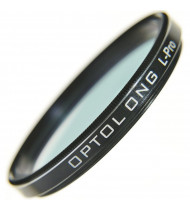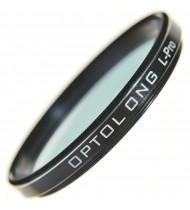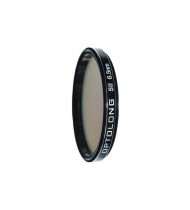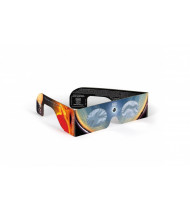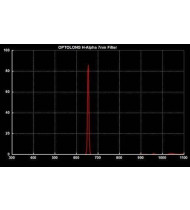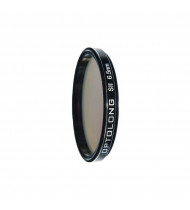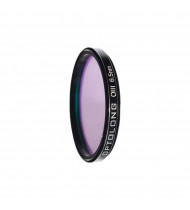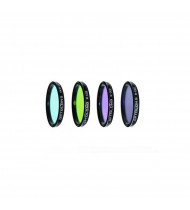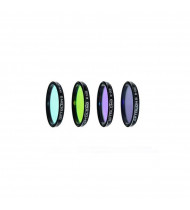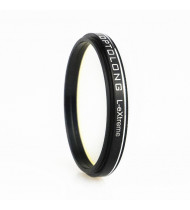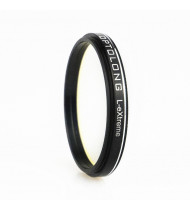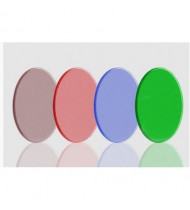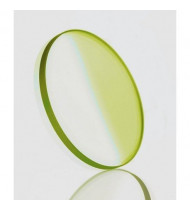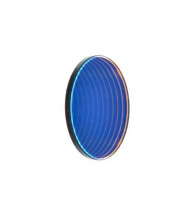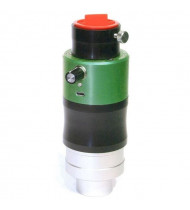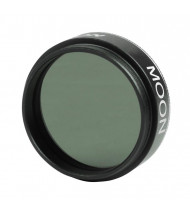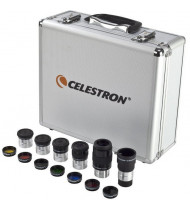Search results for 'skywatcher evostar 100ed ex demo skbked100 8032539193368'
Optolong L-Pro Filter 2"
US$ 168.98The L-Pro CCD filter improves the contrast of deep-sky objects and reduces the sky background.
- blocks UV and IR (700 - 1100 nm)
- high transmission at passband
- improved color balance for DSLRs and One-Shot Color Astro Cameras, e.g. ASI Color Cameras cooled or uncooled by ZWO.
- high optical quality
- in 2" filter cell
- The L-Pro Nebula filter permits roughly 3x longer exposure times than without a filter and therefore improves contrast significantly.
Optolong L-Pro Filter 1.25"
US$ 146.74The L-Pro Astrophotography CCD filter is a filter for improving the contrast of deep-sky objects and dampening the sky background.
- blocks UV and IR (700 - 1100 nm)
- high transmission at passband
- improved color balance for DSLRs and One-Shot Color Astro Cameras, e.g. ASI Color Cameras cooled or uncooled by ZWO.
- high optical quality
- in 1.25" filter cell
- The L-Pro Nebula filter permits roughly 3x longer exposure times than without a filter and therefore improves contrast significantly.
Optolong OIII Filter 6,5nm 2" (50.8mm)
US$ 200.10Extra Narrowband OIII-CCD 6.5nm filter is designed for nebula observation allowing 6.5nm bandwidth of light centered on a wavelength of 500nm through, which corresponds to OIII emission lines, and reducing the transmission of certain wavelengths of light, specifically those produced by artificial light including mercury vapor, and both high and low pressure sodium vapor lights and the unwanted natural light caused by neutral oxygen emission in our atmosphere (i.e. skyglow).
Optolong SII Filter 6.5nm 2" (50.8mm)
US$ 200.10Extra narrowband SII-CCD 6.5nm filter (Sulful II for CCD) is designed for nebula observation allowing 6.5nm bandwidth of light centered on a wavelength of 672nm through, and reducing the transmission of certain wavelengths of light, specifically those produced by artificial light including mercury vapor, and both high and low pressure sodium vapor lights and the unwanted natural light caused by neutral oxygen emission in our atmosphere (i.e. skyglow).
- Safe solar observation! 100% UV-protection, 100% IR-protection, sun light intensity reduced by 99,999%
- Our Solar Viewer AstroSolar® Silver/Gold – MADE IN GERMANY – safely protect your eyes for visual solar observation. This is THE solution to see the partial phase of Solar Eclipses or even big sunspots with your own eyes!
- Consists of Baader AstroSolar® Silver/Gold Film, with eye-sided reflex-free viewing. Also blocks IR, thus no unpleasant feeling of warmth in the eyeball. Optical Density OD=5,0
- CE / ISO certified: conforms to and meets the transmission requirements for eye safety: EN ISO 12312-2:2015 – Instructions in four languages (English, German, French, Spanish) on the inner side of the solar viewer
OUT OF STOCK
Optolong H-Alpha 7nm 1.25" (31.8mm) v.2
US$ 137.84Bester H-alpha-Linienfilter für die Astrofotografie von Emissionsnebeln mit höchstem Kontrast und der Wiedergabe zartester Nebeldetails.
♦ schmalbandiger (<=7 nm) Linienfilter für wichtige Nebellinie
♦ bevorzugt für CDD-Kameras mit Full-Frame-Transfer-Technik
♦ 2 mm dick und somit homofokal mit vielen anderen Filtern von Optolong
♦ Interferenzfilter
♦ feinoptisch poliert
♦ mehrschichtig hartvergütet - reflexfrei und weitgehend kratzfestOptolong SII Filter 6.5nm 1.25" (31.8mm)
US$ 150.30Extra narrowband SII-CCD 6.5nm filter (Sulful II for CCD) is designed for nebula observation allowing 6.5nm bandwidth of light centered on a wavelength of 672nm through, and reducing the transmission of certain wavelengths of light, specifically those produced by artificial light including mercury vapor, and both high and low pressure sodium vapor lights and the unwanted natural light caused by neutral oxygen emission in our atmosphere (i.e. skyglow).
Optolong OIII Filter 6,5nm 1.25" (31.8mm)
US$ 132.51Extra Narrowband OIII-CCD 6.5nm filter is designed for nebula observation allowing 6.5nm bandwidth of light centered on a wavelength of 500nm through, which corresponds to OIII emission lines, and reducing the transmission of certain wavelengths of light, specifically those produced by artificial light including mercury vapor, and both high and low pressure sodium vapor lights and the unwanted natural light caused by neutral oxygen emission in our atmosphere (i.e. skyglow).
Optolong Kit L-RGB 1,25" (31.8mm)
US$ 191.20The LRGB filter kit is designed for maximum contrast and with extremely high gradients for a clear differentiation of light colors
Optolong Kit L-RGB 2" (50.8mm)
US$ 292.59The LRGB filter kit is designed for maximum contrast and with extremely high gradients for a clear differentiation of light colors
Optolong L-eXtreme Filter 2" (50.8mm)
US$ 265.91The advantage of the L-eXtreme filter is that there is no transmission between the H-beta and OIII lines, as there is no nebula emission lines there. In this case, it isn't letting light pollution come through so that maximize nebulas signal and make the sky background darker while imaging. The L-eXtreme filter should better isolate the emission lines only and better protect from light pollution.
Optolong L-eXtreme Filter 1.25" (31.8mm)
US$ 203.66The advantage of the L-eXtreme filter is that there is no transmission between the H-beta and OIII lines, as there is no nebula emission lines there. In this case, it isn't letting light pollution come through so that maximize nebulas signal and make the sky background darker while imaging. The L-eXtreme filter should better isolate the emission lines only and better protect from light pollution.
Optolong Kit LRGB 36mm
US$ 239.23The LRGB filter kit is designed for maximum contrast and with extremely high gradients for a clear differentiation of light colors
Optolong OIII Filter 6,5nm 36mm
US$ 155.63Extra Narrowband OIII-CCD 6.5nm filter is designed for nebula observation allowing 6.5nm bandwidth of light centered on a wavelength of 500nm through, which corresponds to OIII emission lines, and reducing the transmission of certain wavelengths of light, specifically those produced by artificial light including mercury vapor, and both high and low pressure sodium vapor lights and the unwanted natural light caused by neutral oxygen emission in our atmosphere (i.e. skyglow).
Optolong SII Filter 6.5nm 36mm
US$ 155.63Extra narrowband SII-CCD 6.5nm filter (Sulful II for CCD) is designed for nebula observation allowing 6.5nm bandwidth of light centered on a wavelength of 672nm through, and reducing the transmission of certain wavelengths of light, specifically those produced by artificial light including mercury vapor, and both high and low pressure sodium vapor lights and the unwanted natural light caused by neutral oxygen emission in our atmosphere (i.e. skyglow).
Daystar QUARK Magnesium I b2-line
US$ 1,333.12Explore highly magnetized and powerful excitations in the bright Magnesium I (b2) line. For use on refractors of F/4 - F/8 focal ratio refractors. This latest and likely the last wavelength offered for Quark reveals a whole new area of highly magnetized high energy in the bright 5172.8Å wavelength. The eye is most sensitive at this wavelength so the image is significantly brighter than calcium. Views show both plage and dark mottling of chromospheric network.Celestron Moon Filter 1.25" (31.8mm)
US$ 16.89Reduce glare and increase contrast of the Moon with the Celestron 1.25” Moon Filter. Also useful for extra bright planets as well as terrestrial viewing over sand or snow. Threads onto most 1.25” eyepieces in secondsCelestron Eyepiece and Filter Kit 1.25"
US$ 248.12Five quality Plossl eyepieces, a 2X Barlow Lens, six colored filters to improve observations of the planets, a Moon filter, and a foam-fitted aluminum carry case with extra room to grow


